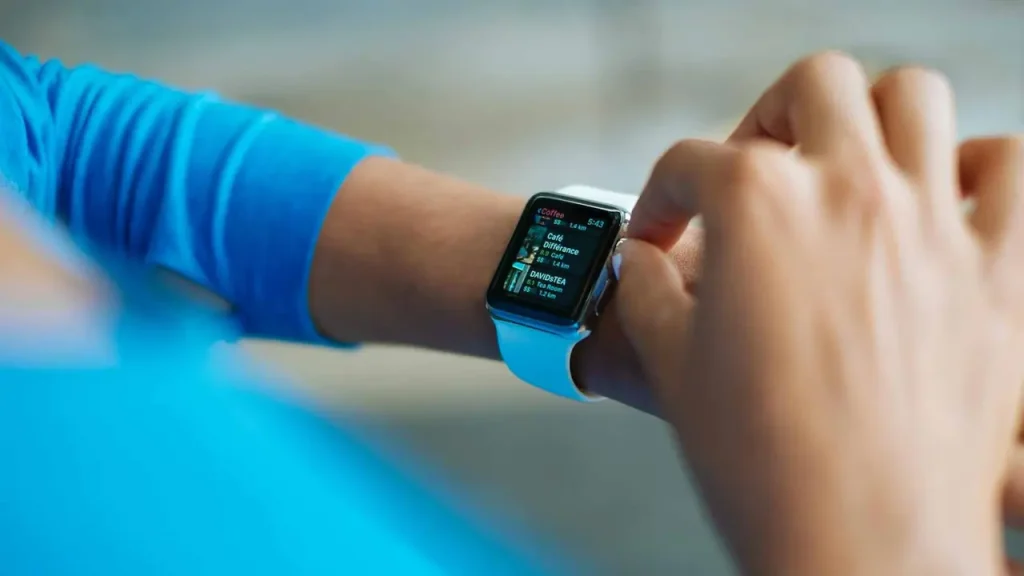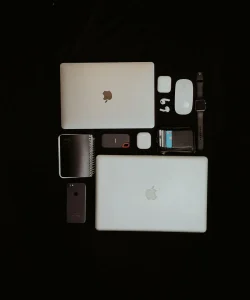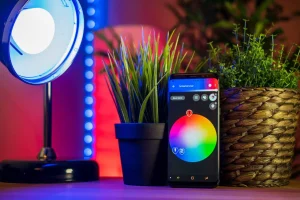
Ultimate Guide to Popular Wearable Technology Features
My wrist feels weirdly naked without a smart device strapped to it. It’s become a modern extension of self, a tiny computer that whispers notifications, tracks my every move, and occasionally tells me to just breathe. But stepping into this world can feel like learning a new language, bombarded with acronyms and features that all sound incredibly important.
The market is absolutely flooded with options, and frankly, it’s a bit much. You’ve got sleek rings, powerful watches, and simple bands, each screaming about its own set of revolutionary capabilities. How do you cut through the noise? This guide to popular wearable technology features aims to demystify the jargon and empower you to choose the right gadget for your lifestyle.
Unveiling the World of Wearable Technology
Wearable tech has exploded from a niche gadget category into a mainstream phenomenon. But what exactly are we talking about? It’s more than just a digital watch. It’s about data, convenience, and a closer connection to our own biometrics.
What Defines Modern Wearable Devices?
At their core, modern wearables are electronic devices that can be worn as accessories. Think smartwatches, fitness trackers, smart rings, and even smart clothing. They are loaded with advanced sensors designed to collect data about your body and your environment.
They connect, usually via Bluetooth, to your smartphone, creating a seamless ecosystem of information. They are part personal assistant, part health coach, and part communication hub, all conveniently located on your body. It’s this fusion of form and function that truly defines them.
The Evolution of Wearable Gadgets
Remember those clunky calculator watches from decades ago? That was wearable tech, version 1.0. We’ve come a long, long way. The journey from simple step counters to today’s sophisticated devices has been remarkable. Early fitness trackers were glorified pedometers. Now, they’re miniature labs on our wrists. The evolution was driven by advancements in sensor technology, battery efficiency, and our collective desire to quantify everything about our lives.
Revolutionizing Health and Fitness Tracking
This is the big one. For most people, health and fitness tracking is the primary reason to buy a wearable. They offer a window into our physical selves that was previously unimaginable without a trip to the doctor. And the capabilities here are staggering.
Comprehensive Activity and Exercise Monitoring
The foundation of any good wearable is its ability to monitor your daily activity. It’s about more than just counting steps; it’s about creating a holistic picture of your movement throughout the day.
Step Counting and Calorie Burn
This is the most basic feature, yet it’s profoundly motivating. Seeing your step count rise can be the push you need to take the stairs instead of the elevator. But a common question is, how accurate are wearable fitness trackers for calories? Honestly, it’s an educated guess. They use your heart rate, movement, height, and weight to create an estimate. It’s not perfect, but it provides a consistent baseline to work from, and that’s what matters.
Advanced Workout Tracking Modes
Modern devices go far beyond a simple run-tracking mode. You can find profiles for swimming, HIIT, yoga, weightlifting, cycling, and dozens of others. Each mode uses a specific algorithm to better track the metrics relevant to that activity.
In-Depth Heart Rate and Cardiovascular Health
Your heart is your engine, and wearables offer an unprecedented look under the hood. Understanding this technology is a central theme for anyone interested in personal health.
Continuous Heart Rate Monitoring
Using lights and sensors (a technology called photoplethysmography), wearables can track your heart rate 24/7. This provides invaluable data, like your resting heart rate—a key indicator of cardiovascular fitness. Knowing how do smartwatches track heart rate accurately helps build trust in the data they provide for a healthier lifestyle.
ECG Capabilities Explained
So, what is ECG functionality on a smartwatch? An electrocardiogram (ECG or EKG) feature allows the device to measure the electrical activity of your heart. It can help detect signs of atrial fibrillation (AFib), a type of irregular heart rhythm. It’s an on-the-spot check, not a continuous monitor, and it’s a serious piece of health tech that has become a major selling point.
Sleep Analysis and Recovery Insights
I’m obsessed with my sleep score. Seriously. Waking up and seeing how I scored has become a morning ritual. This is where understanding fitness tracker sleep analysis metrics becomes so powerful. They break down your night into light, deep, and REM sleep, telling you how restorative your rest actually was. Using wearable tech for precise sleep pattern monitoring has been a game-changer for my personal health journey, which is essential for anyone serious about recovery and performance.
Stress Management and Mindfulness Tools
Life is stressful. Wearables get it. Many devices now include features for wearable technology for effective stress management. They use metrics like heart rate variability (HRV) to estimate your stress levels and then prompt you with guided breathing exercises or mindfulness sessions to help you find your calm. Some even have an electrodermal activity (EDA) sensor to measure your body’s stress response. It’s like having a mindfulness coach on your wrist.
Blood Oxygen (SpO2) Monitoring
Let’s explain blood oxygen monitoring in smartwatches. This feature measures the oxygen saturation level in your blood. While it’s not a medical-grade tool, it can be useful for fitness enthusiasts training at high altitudes or for anyone wanting another data point about their respiratory health. It’s another layer of information in this increasingly complex field.
Staying Connected: Communication and Notifications
Beyond health, wearables are about convenience and connectivity. They act as a filter for your digital life, bringing what’s important right to your wrist.
Seamless Smartphone Integration
The magic of a wearable is its synergy with your smartphone. Whether you have an iPhone or an Android device, the integration is deep. Calendars, apps, and health data all sync effortlessly, creating a cohesive experience.
Hands-Free Calling and Messaging
Being able to answer a call on your watch feels futuristic every single time. It’s incredibly useful when your hands are full. Many devices also allow you to dictate quick replies to texts. For those always on the move, wearable tech for hands-free communication on the go is a killer feature.
Smart Notifications and Alerts
This is a double-edged sword. Getting every single phone notification on your wrist is a recipe for anxiety. The real power is in customization. You can choose to only receive alerts from specific apps or contacts, turning your wearable into a brilliant filter that lets you keep your phone in your pocket.
Voice Assistant Accessibility
Having Siri, Google Assistant, or Alexa on your wrist is surprisingly handy. You can set reminders, ask for weather updates, or control smart home devices with just your voice. When looking for the best smartwatches with integrated voice assistant, consider how this feature can streamline your daily tasks.
Enhancing Daily Life with Smart Features
The utility of wearables extends far beyond notifications and step counts. They are becoming indispensable tools for navigating and simplifying modern life.
GPS and Location Tracking for Navigation
For runners, cyclists, and hikers, built-in GPS is non-negotiable. It allows for accurate tracking of distance, pace, and route without needing your phone. The benefits of GPS in wearable devices for running are immense, providing precise data to analyze and improve performance.
Contactless Payments on Your Wrist
This is one of those features that, once you use it, you can’t live without. Learning how to use contactless payments with wearable tech is simple. You just add your credit card to the device’s wallet and tap your wrist on the terminal. It’s fast, secure, and perfect for grabbing a coffee after a run.
Music Playback and Control
Many smartwatches offer onboard music storage. You can download your favorite playlists or podcasts, pair some Bluetooth headphones, and leave your phone at home. It’s liberating.
Personal Safety and Emergency Features
This is a profoundly important innovation. Features like fall detection can automatically alert emergency services and your contacts if you take a hard fall and are unresponsive. Emergency SOS lets you quickly call for help. This is a critical aspect of any guide to wearable tech for elderly health monitoring, providing peace of mind for users and their families.
Beyond the Basics: Advanced and Emerging Capabilities
The world of wearables is constantly evolving. What seems futuristic today will be standard tomorrow. This forward-looking perspective is crucial for understanding where the technology is headed.
Understanding Smart Ring Functionality
Don’t want to wear a watch? Smart rings offer a more discreet way to track activity, sleep, and recovery. Focused and minimalist, understanding how smart rings enhance daily convenience shows a shift towards less intrusive technology that still delivers powerful insights.
Glucose Monitoring Innovations
The holy grail for wearable tech is non-invasive glucose monitoring. While it’s not commercially available yet, many companies are actively developing this technology, which would be a revolutionary tool for diabetes management.
Body Temperature Sensing
A more recent addition, body temperature sensing can provide insights into potential illness, recovery status, and advanced cycle tracking for women’s health. It adds another layer of proactive health monitoring.
Gesture Control and Haptic Feedback
The way we interact with our devices is changing. Emerging gesture controls allow you to answer calls or dismiss notifications with a simple flick of the wrist. Advanced haptic feedback provides more nuanced vibrations for different types of alerts.
Extended Battery Life Technologies
Battery life remains the Achilles’ heel of many powerful smartwatches. Innovations in low-power displays and more efficient chipsets are constantly pushing the boundaries, with some devices now offering weeks of use on a single charge.
Choosing Your Perfect Wearable Device
So, with all this information, how do you choose? It comes down to your personal needs and priorities.
Factors to Consider Before Buying
Before you buy, you need to know what features to look for in a new wearable. Consider these: compatibility (iOS or Android?), battery life (are you okay with charging daily?), primary use (hardcore fitness or smart notifications?), and, of course, your budget. Be honest about what you’ll actually use.
Comparing Different Wearable Categories
It’s also important to understand the differences between smartwatches and fitness bands. Smartwatches are powerful, app-driven extensions of your phone. Fitness bands are typically more focused, offering incredible battery life and core health tracking without the bells and whistles. Choose the category that best fits your goals.
The Future of Wearable Innovation
The journey of wearable technology is far from over. If anything, it’s just getting started.
Upcoming Trends in Wearable Tech
We can expect to see more advanced sensors, deeper health insights, and new form factors like smart clothing and hearables. The future of health monitoring wearable innovation is bright, with a move towards proactive and predictive health data that could warn us of potential issues before they become serious.
Impact on Health and Lifestyle
Wearable technology has fundamentally changed how we interact with our own health data. It has democratized information that was once locked away in a doctor’s office. By providing continuous feedback, it empowers us to make small, consistent changes that lead to healthier, more active lives. That, ultimately, is the most powerful feature of all.







